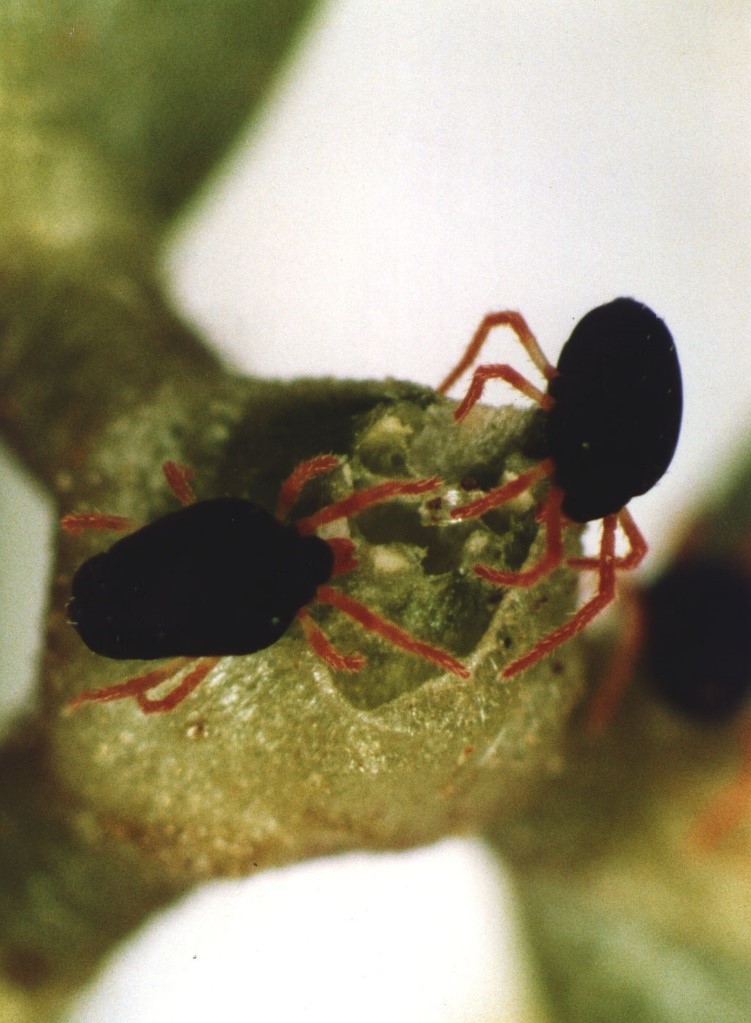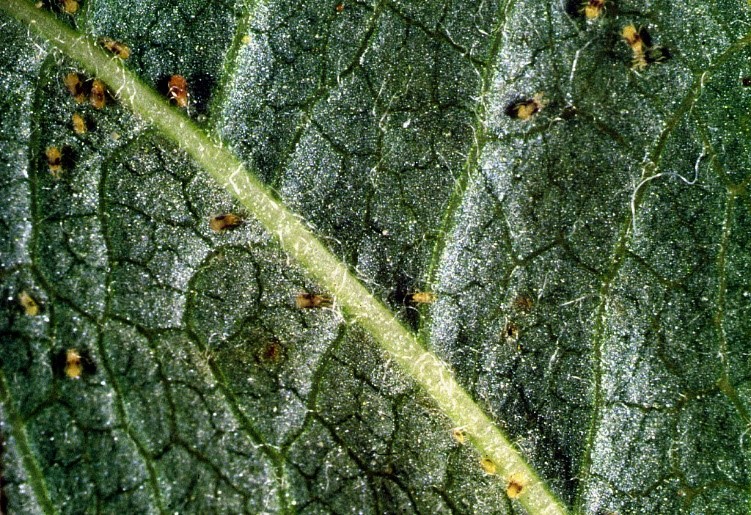Did you know that mites are overachievers?
They are the most successful out of all invertebrate groups. Since they’re so tiny, they easily go unnoticed and have thus been crowned as one of the most important pests that attack Australian crops.
With increasing tolerance and resistance to chemicals, mites are thriving, and how! In this article, we’re going to discuss the mightiest of mites that threaten our pastures.
The first step begins with identifying the mites right. So let’s name our enemies first, shall we?
- Red legged Earth Mite
- Blue Oat Mite
- Balaustium Mite
- Bryobia Mite
- Brown Wheat Mite
- Two Spotted Mite
These mites are so similar in appearance, clones almost. And it can get difficult to identify them. This is the major reason for ineffective control of mite pests in pastures as well as crops.
So, let’s get cracking and learn all about these insects and what makes them tick (sorry, we couldn’t resist!)
1. Red legged Earth Mite:
The Red legged earth mite has a velvety black body and eight red legs. They are often found hanging out in little groups of up to 30 mites. When they feed on grass and leaves, it results in a white discoloration of the leaves and sometimes distortion and shriveling.

They reproduce sexually and can have up to 3 generations per season. It takes about 4-6 weeks for nymphs to grow into adults.
In spring, the third generation of mites produces over-summering eggs that remain in their bodies. When the female dies, the eggs continue to lie on the surface of the soil and then hatch during the coming autumn.
2. Blue Oat Mite:
Blue oat mites have a bluish-black body with a distinct red mark on the back and eight orange-red legs. They have three generations per season and each generation lasts for about 8 to 10 weeks.

The young ones (nymphs) are pinkish-orange and they form six legs on hatching. The color changes as they mature and turns into green and then blue-black.
The cold temperatures and moisture that are brought by the Autumn season help the eggs to hatch. All crops and pastures are vulnerable to attack by the Blue oat mite, especially at the seedling age.
Unlike the Redlegged earth mite, the Blue oat mite prefers to feed singularly or in small groups.
3. Balaustium Mite:
Balaustium mites grow to about 2 mm in length. They have a rounded reddish-brown body with eight red-orange legs. At maturity, they grow to sizes larger than other mites.
The adults are covered with short stout hairs. They move very slowly and have pad-like structures attached to their forelegs.
Newborn mites are bright orange with six legs. The mites have two generations per season and unlike other mites, they don’t require cold temperatures to encourage the egg-hatching process. Eggs will hatch as long as there is sufficient moisture. Balaustium mites usually attack the edges of leaves and the tips of leaves in plants.
Balaustium mites naturally have a high tolerance to chemicals and will even survive pesticide applications that are aimed at other pests!
4. Bryobia Mite:
Adult Bryobia mites are slightly smaller than a pinhead with a dark grey body and pale red or orange legs. They are usually confused with the Red legged earth mite and most times, it’s difficult to separate them without the use of a hand lens.
They have very long front legs which are held out in front of the body like a pair of feelers.
Adult Bryobia is active during multiple seasons in a year including late spring, summer and autumn. The eggs are present in winter and then hatch when the weather turns warm and dry in spring and summer.
They cause severe damage to plants by feeding on the top of the leaves. They stab the leaves’ surface cells with their sharp mouths and suck out the sap. This gruesome behaviour results in the formation of some whitish-grey spots that give the leaves a very wilted look.
5. Two-spotted mite:
Two-spotted mites, also referred to as two-spotted spider mites have a wide host range and are easily spread by wind.
When conditions are conducive to its survival, the two-spotted mite’s life cycle would span 2 weeks. A female can lay up to 6 eggs per day and 70 or more in a lifetime.

Nymphs and adults damage the plants by piercing their cells and sucking out the contents.
This causes chlorotic spots which give the leaves a stippled appearance. The heavily infested leaves will turn yellow, bronze and become shriveled. This in turn decreases the surface area available for photosynthesis and causes the tree’s condition to deteriorate.
At its prime, the two-spotted mite is a web spinner. The webs protect the mites from predators and pesticides.
6. Brown wheat mite:
Brown wheat mites are like oblong globes that are reddish-brown. They have pale yellowish-orange legs and their forelegs are longer than their other three legs.
Brown wheat mites are especially a nuisance during periods of warm and dry weather. Brown wheat mites are known to destroy plant cells as they feed, which results in a stippling of leaves.
They feed on the tips of the leaves, thereby causing them to dry up and die. Fields that are heavily infested will have a scorched and withered appearance.
Now that we have rounded up the most common pasture mites that threaten to cause damage to our carefully-maintained expanse of land, let’s discuss what to do after identifying the species correctly.
Monitoring:
Monitoring is everything. It includes three main aspects:
- Assessing the health of the crop
- Presence of pests
- Studying their population levels are regular intervals
Like we mentioned earlier, the identification of pests and their relative densities is necessary to help control their growth.
The most common methods to monitor mites are:
- Visual assessments
- Suction sampling
- Pitfall traps
- Germinating seed baits
It’s important to inspect crops that are susceptible from autumn to spring. It’s also important to inspect crops regularly in the first few weeks of their emergence.
Do not inspect crops when it is raining, or when conditions are wet.
Sufficient monitoring can also help save funds by avoiding pesticides. Apart from this, it can also help with the early detection of mites which can cause a lot of damage to crops.
When you’re doing your inspections, choose monitoring sites within each paddock. Previously weedy areas and fence lines adjoining pastures are also good places to inspect.
That brings us to the end of this article. Trust you found it useful.
Check out our other articles on diseases, pests and weeds that can affect your livestock farm.
- The Dedicated Team of Pasture.io, 2021-03-03